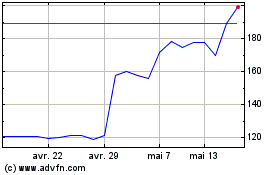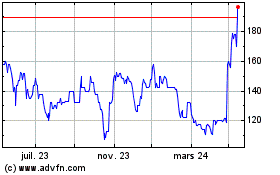IFRS 9: the first phase of IFRS 9, which addressed
classification and measurement of financial assets was published in
November 2009, and was subsequently amended in October 2010 and
November 2013, to include classification and measurement
requirements for financial liabilities and hedge accounting
requirements. IFRS 9 does not currently have a mandatory effective
date. A mandatory effective date will be set when the IASB
completes the impairment phase of the project. However, the IASB
has tentatively decided that the mandatory effective date of IFRS 9
will be for annual periods beginning on or after 1 January 2018.
The Group will quantify the impact of IFRS 9 when the final
standard, including all phases, is issued.
IFRS 10: IFRS 10 replaces the portion of IAS 27 that addresses
the accounting for consolidated financial statements. IFRS 10 does
not change consolidation procedures (i.e. how to consolidate an
entity). Rather, IFRS 10 changes whether an entity is consolidated
by revising the definition of control. IFRS 10 also provides a
number of clarifications on applying the new definition of
control.
IFRS 12: IFRS 12 includes all the disclosure requirements for
subsidiaries, joint ventures, associates and "structured
entities".
IFRS 15: IFRS 15 replaces existing IFRS revenue recognition
requirements in IAS 18 Revenue. The standard applies to all revenue
contracts and provides a model for the recognition and measurement
of sales of some non-financial assets (e.g. disposals of property,
plant and equipment). The core principle of IFRS 15 is that revenue
is recognised to depict the transfer of promised goods or services
to customers in an amount that reflects the consideration to which
the entity expects to be entitled in exchange for those goods or
services. Application is required for annual periods beginning on
or after 1 January 2017. The Group are currently assessing the
impact of IFRS 15.
2 Critical accounting judgements and key sources of estimation
uncertainty
In the application of the Group's accounting policies, which are
described in note 1, the Directors are required to make judgements,
estimates and assumptions about the carrying amounts of assets and
liabilities that are not readily apparent from other sources. The
estimates and associated assumptions are based on historical
experience and other factors, including expectations of future
events that are believed to be reasonable under the circumstances.
Actual results may differ from these estimates.
The estimates and underlying assumptions are reviewed on an
ongoing basis. Revisions to accounting estimates are recognised in
the period in which the estimate is revised if the revision only
affects that period or in the period of revision and future periods
if the revision affects both current and future periods.
In addition to the forward operating profit and cash flow
projections, the estimates and assumptions that have had a
significant bearing on the financial statements in the current year
or could have a significant risk of causing a material adjustment
to the carrying amounts of assets and liabilities within the next
financial year are discussed below:
Critical judgements in applying the Group's accounting
policies
The following are the critical judgements, apart from those
involving estimations (which are dealt with separately below), that
the Directors have made in the process of applying the Group's
accounting policies and that have the most significant effect on
the amounts recognised in the financial statements.
Exceptional items
The Directors have chosen to separate certain items of financial
performance which they believe, because of size or incidence,
require separate disclosure to enable underlying performance to be
assessed. These items are fully described in note 10.
Key sources of estimation uncertainty
The key assumptions concerning the future, and other key sources
of estimation uncertainty at the balance sheet date, that have
significant risk of causing a material adjustment to the carrying
amount of assets and liabilities within the next financial year,
are discussed in the strategic report and below.
Impairment of goodwill and property, plant and equipment
Determining whether goodwill and property, plant and equipment
are impaired requires an estimation of the value in use of the cash
generating units to which goodwill has been allocated or to which
property, plant and equipment belong. The value in use calculation
requires the entity to estimate the future cash flows expected to
arise from the cash-generating unit and a suitable discount rate in
order to calculate present value. The carrying amount of goodwill
at the balance sheet date was GBP31.2 million (2013: GBP31.5
million). No impairment (2013: GBPnil) was required. The carrying
amount of property, plant and equipment was GBP32.0 million (2013:
GBP30.0 million). No impairment loss (2013: GBPnil) was
required.
Provision for slow moving inventory
The Group has guidelines for providing for inventory which may
be sold below cost due to its age or condition. Directors assess
the inventory at each location and in some cases decide that there
are specific reasons to provide more than the guideline levels, or
less if there are specific action plans in place which mean the
guideline provision level is not required. Determining the level of
inventory provision requires an estimation of likely future
realisable value of the inventory in various time frames and
comparing with the cost of holding stock for those time frames.
Regular monitoring of stock levels, the ageing of stock and the
level of the provision is carried out by the Directors. Details of
inventory carrying values are provided in note 14. At the year end,
stock purchased more than 15 months previously had increased from
GBP5.1 million to GBP5.8 million (at March 2014 exchange rates) and
the Group has provisions of GBP3.3 million (2013: GBP3.7 million)
over the total inventory value.
Share-based payments
The Directors are required to estimate the fair value of
services received in return for share options granted to employees
that are measured by reference to the fair value of share options
granted. For the share options scheme the estimate of the fair
value of the services received is based on a Black Scholes model
(with the contractual life of the option and expectations of early
exercise incorporated into the model). For the long term incentive
plan the estimate of the fair value is based on the share price on
the date the scheme was approved and the proportion of shares
expected to vest. Details of the key assumptions made in the
measurement of share-based payments are provided in note 25.
Taxation
There are many transactions and calculations for which the
ultimate tax determination is uncertain. Significant judgement is
required in determining the Group's tax assets and liabilities.
Deferred tax assets have been recognised to the extent they are
recoverable based on profit projections for future years. Income
tax liabilities for anticipated issues have been recognised based
on estimates of whether additional tax will be due. Notwithstanding
the above, the Group believes that it will recover tax assets and
has adequate provision to cover all risks across all business
operations. See note 13 for more details.
3 Financial risk management
Risk management is discussed in the strategic report and a
discussion of risks and uncertainties can be found further on in
the report, along with the Group's key risks. See note 26 for
additional information about the Group's exposure to each of these
risks and the ways in which they are managed. Below are key
financial risk management areas:
* currency risk is mitigated by a mixture of forward
contracts, spot currency purchases and natural
hedges;
* liquidity risk is managed by monitoring daily cash
balances, weekly cash flow forecasts, regular
reforecasting of monthly working capital and regular
dialogue with the Group's banks; and
* credit risk is managed by constant review of key
debtors and banking with reputable banks.
4 Segmental information
The Group has one material business activity being the design,
manufacture and distribution of gift packaging and greetings,
stationery and creative play products.
For management purposes the Group is organised into four
geographic business units.
The results below are allocated based on the region in which the
businesses are located; this reflects the Group's management and
internal reporting structure. The decision was made during 2011 to
focus Asia as a service provider of manufacturing and procurement
operations, whose main customers are our UK businesses. Both the
China factory and the majority of the Hong Kong procurement
operations are now overseen by our UK operational management team
and we therefore continue to include Asia within the internal
reporting of the UK operations, such that UK and Asia comprise an
operating segment. The Chief Operating Decision Maker is the
Board.
Intra-segment pricing is determined on an arm's length basis.
Segment results include items directly attributable to a segment as
well as those that can be allocated on a reasonable basis.
Financial performance of each segment is measured on operating
profit. Interest expense or revenue and tax are managed on a Group
basis and not split between reportable segments.
Ig Design (LSE:IGR)
Graphique Historique de l'Action
De Juin 2024 à Juil 2024

Ig Design (LSE:IGR)
Graphique Historique de l'Action
De Juil 2023 à Juil 2024
